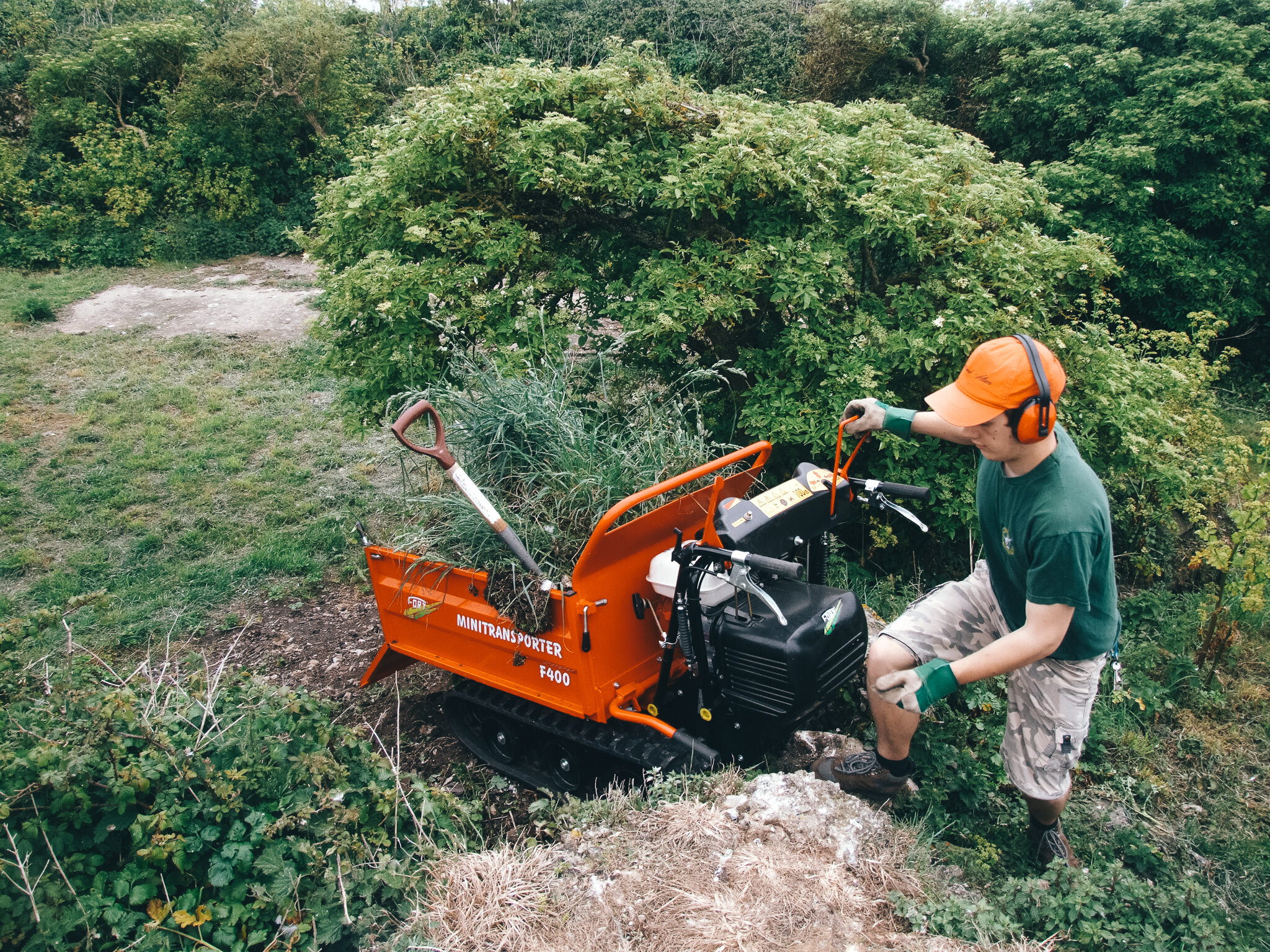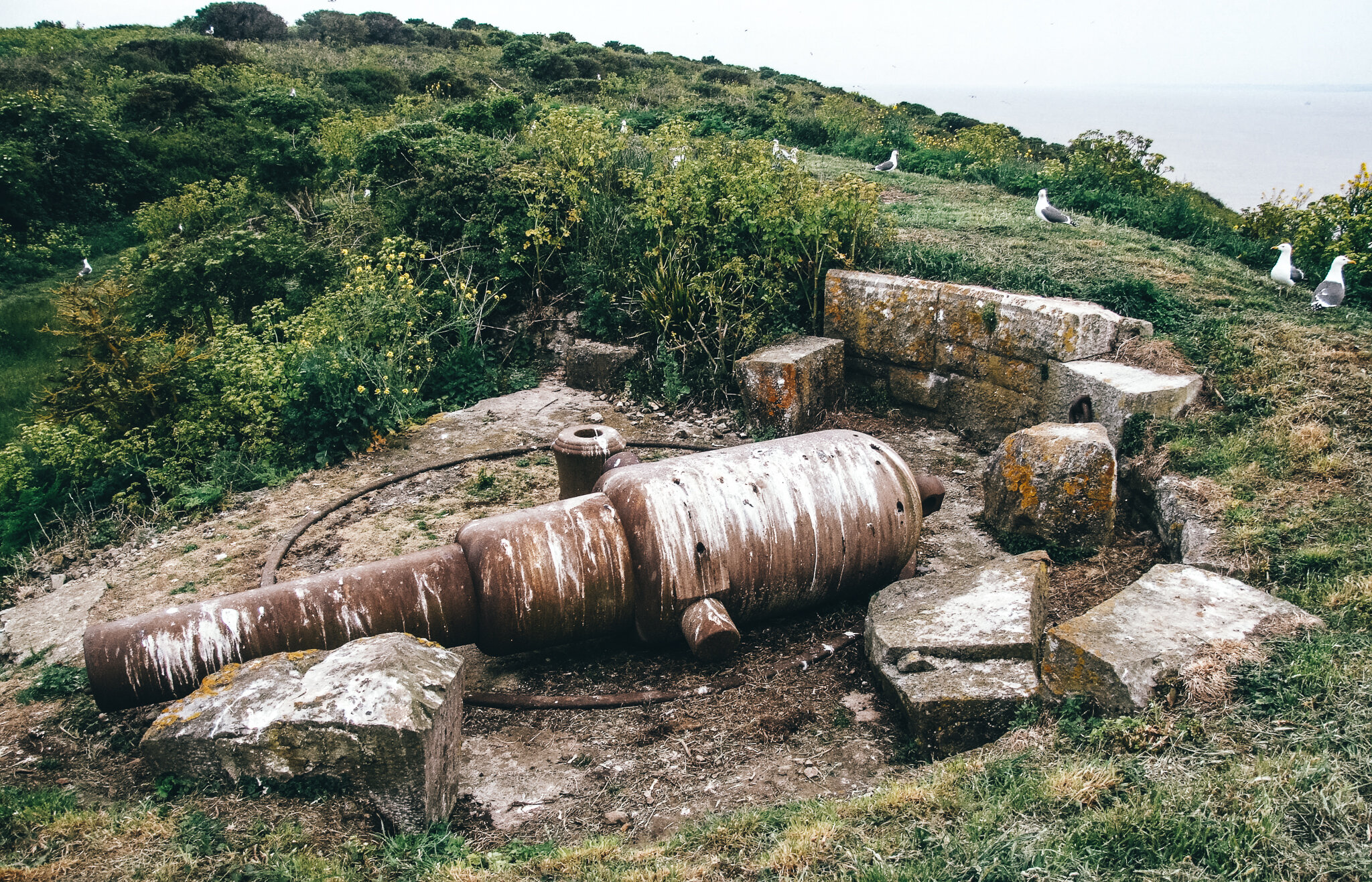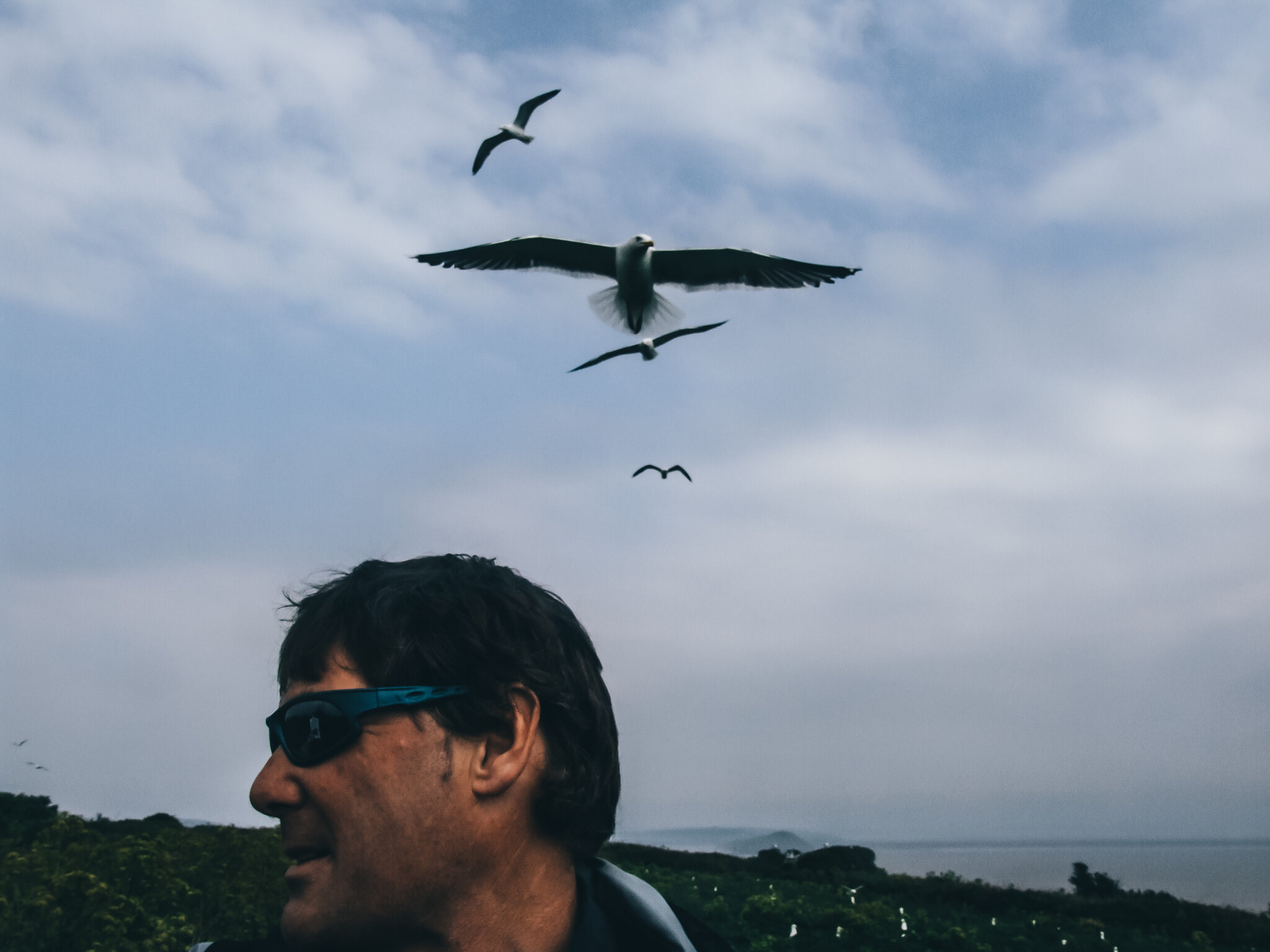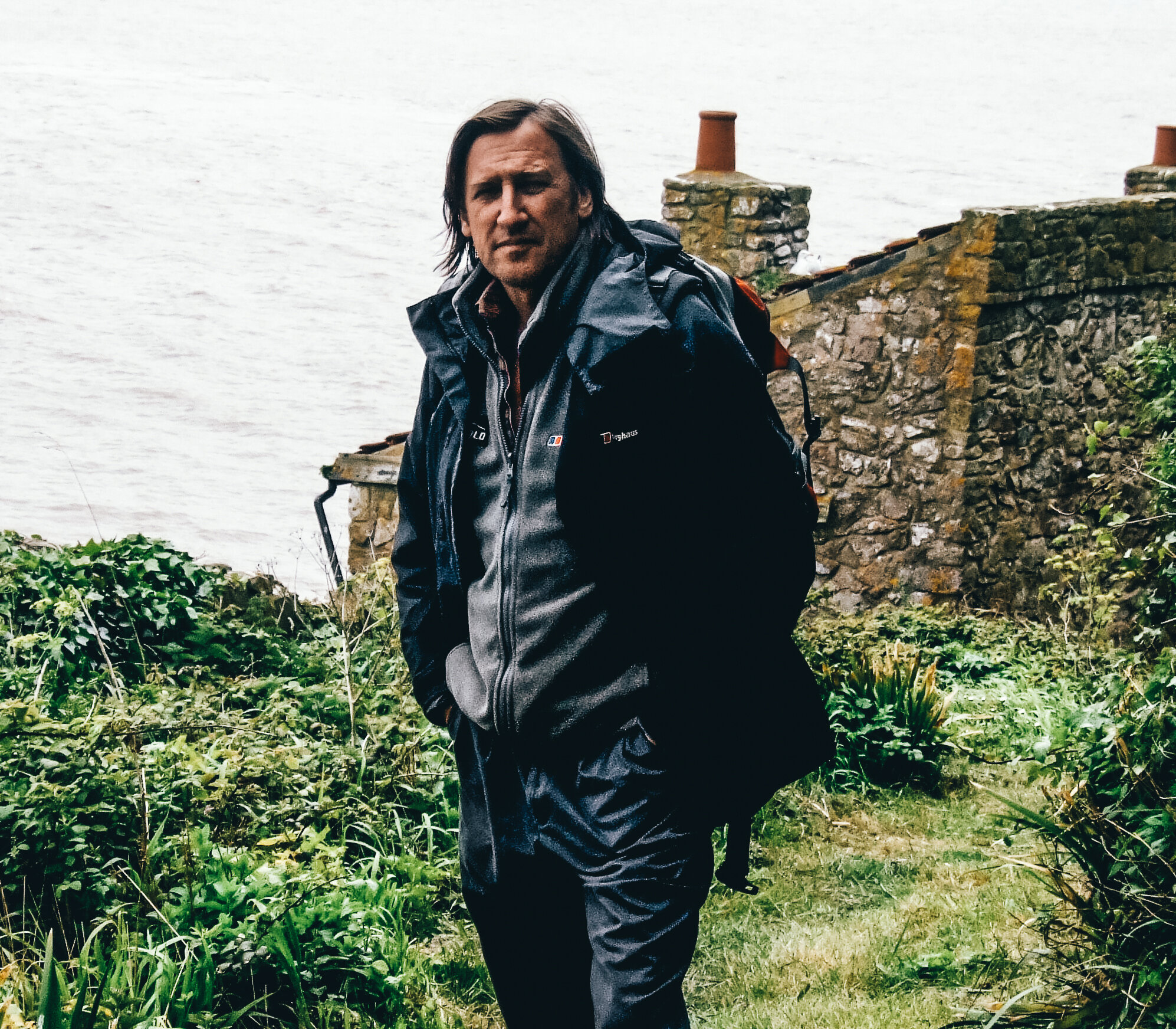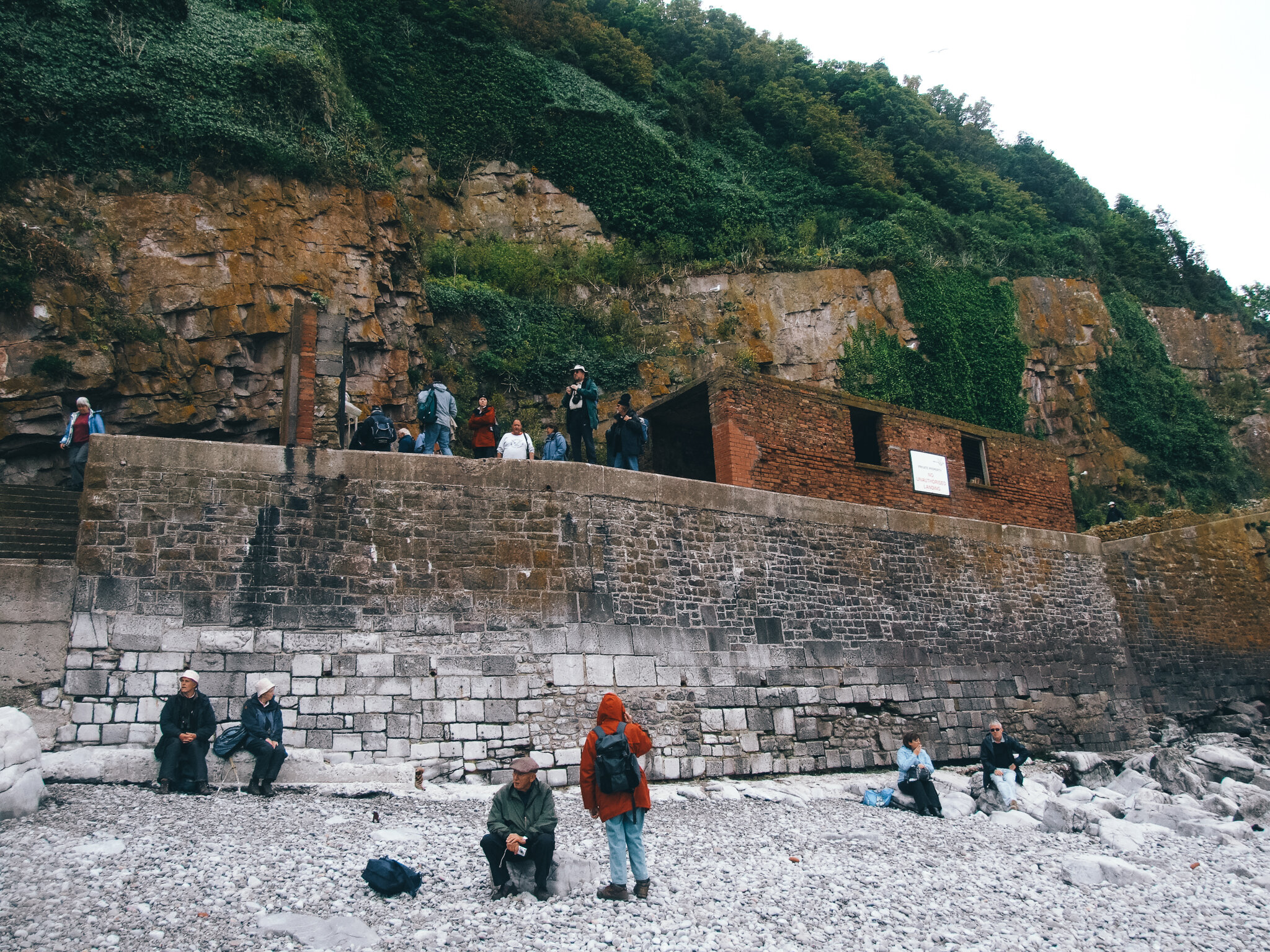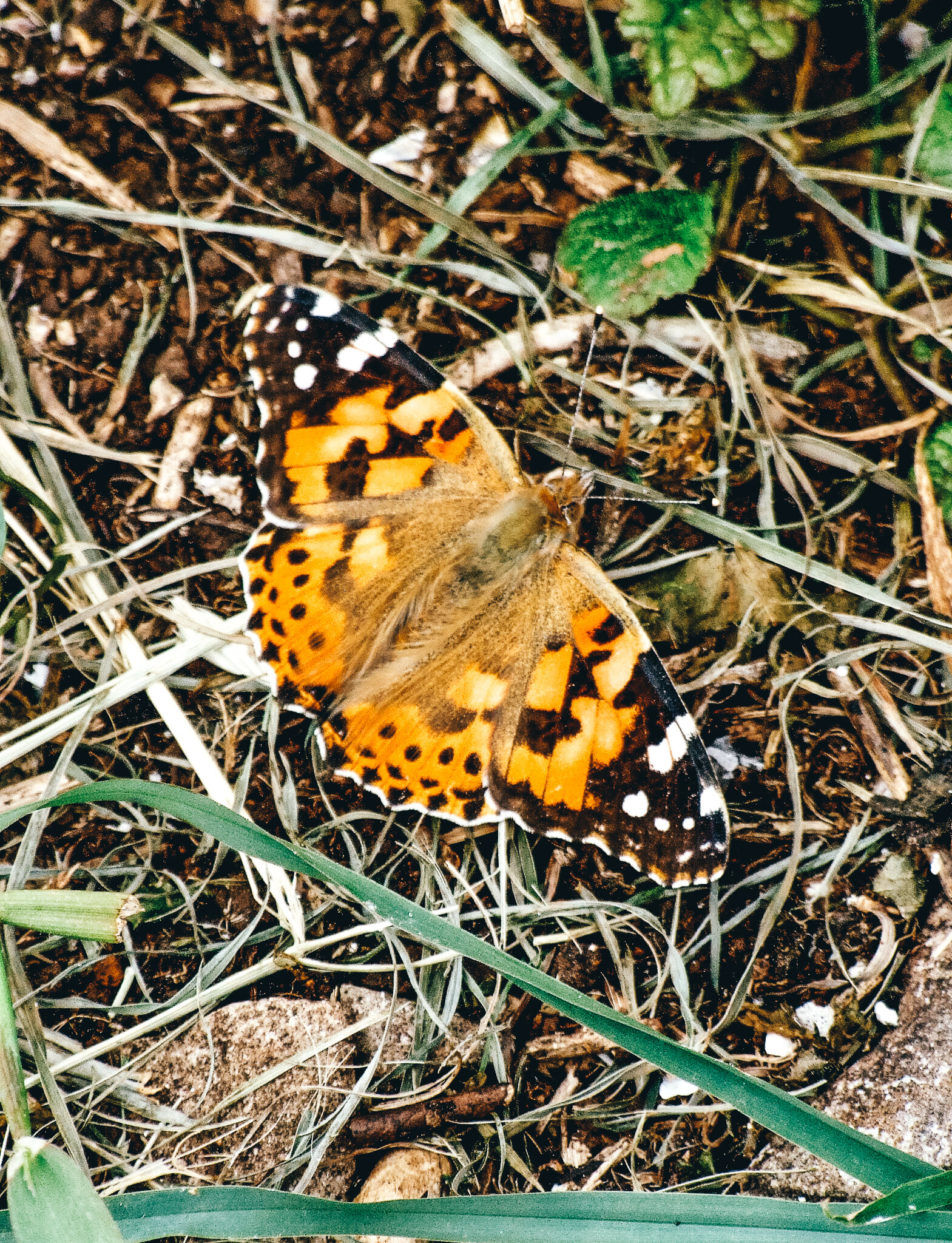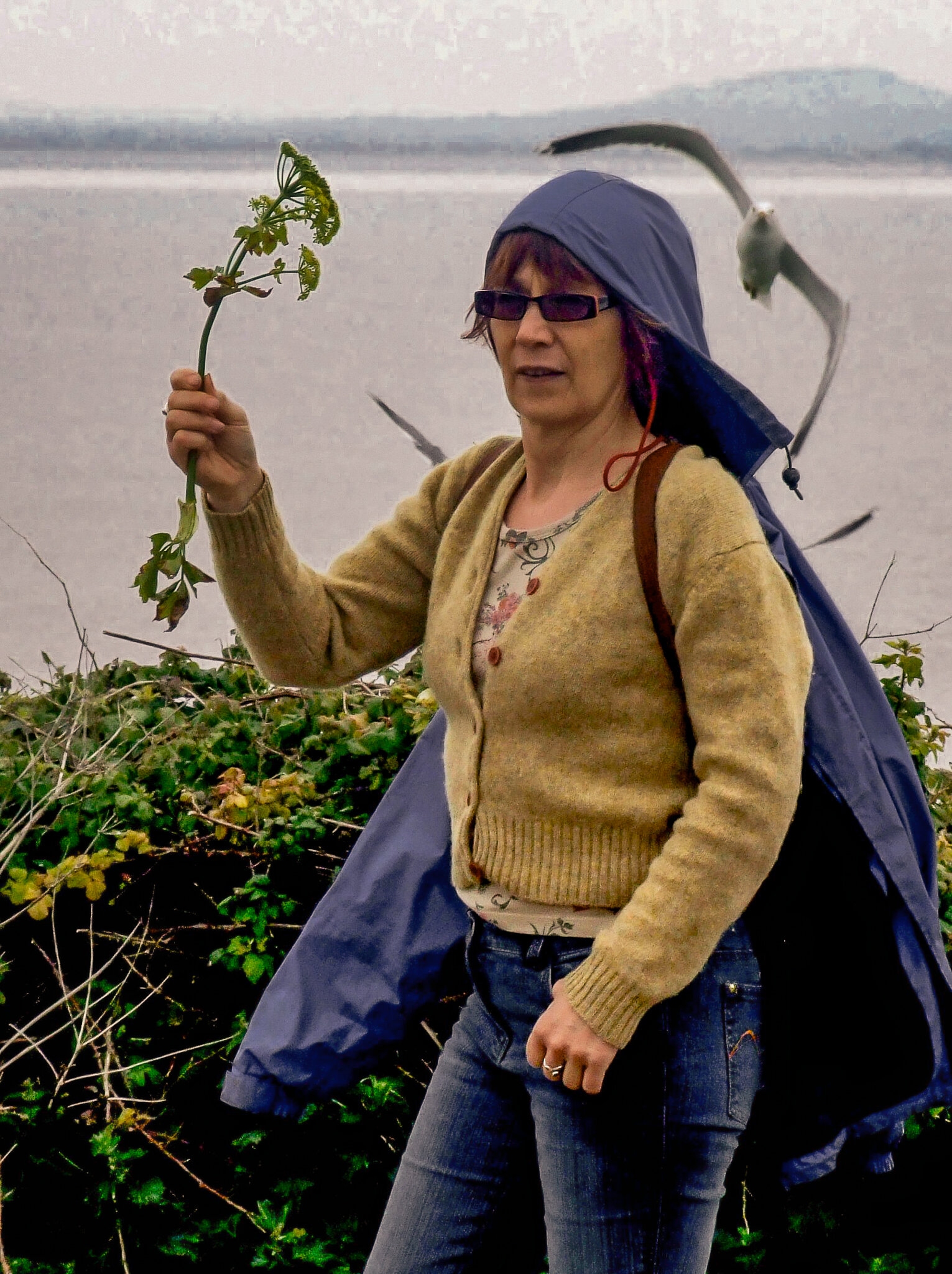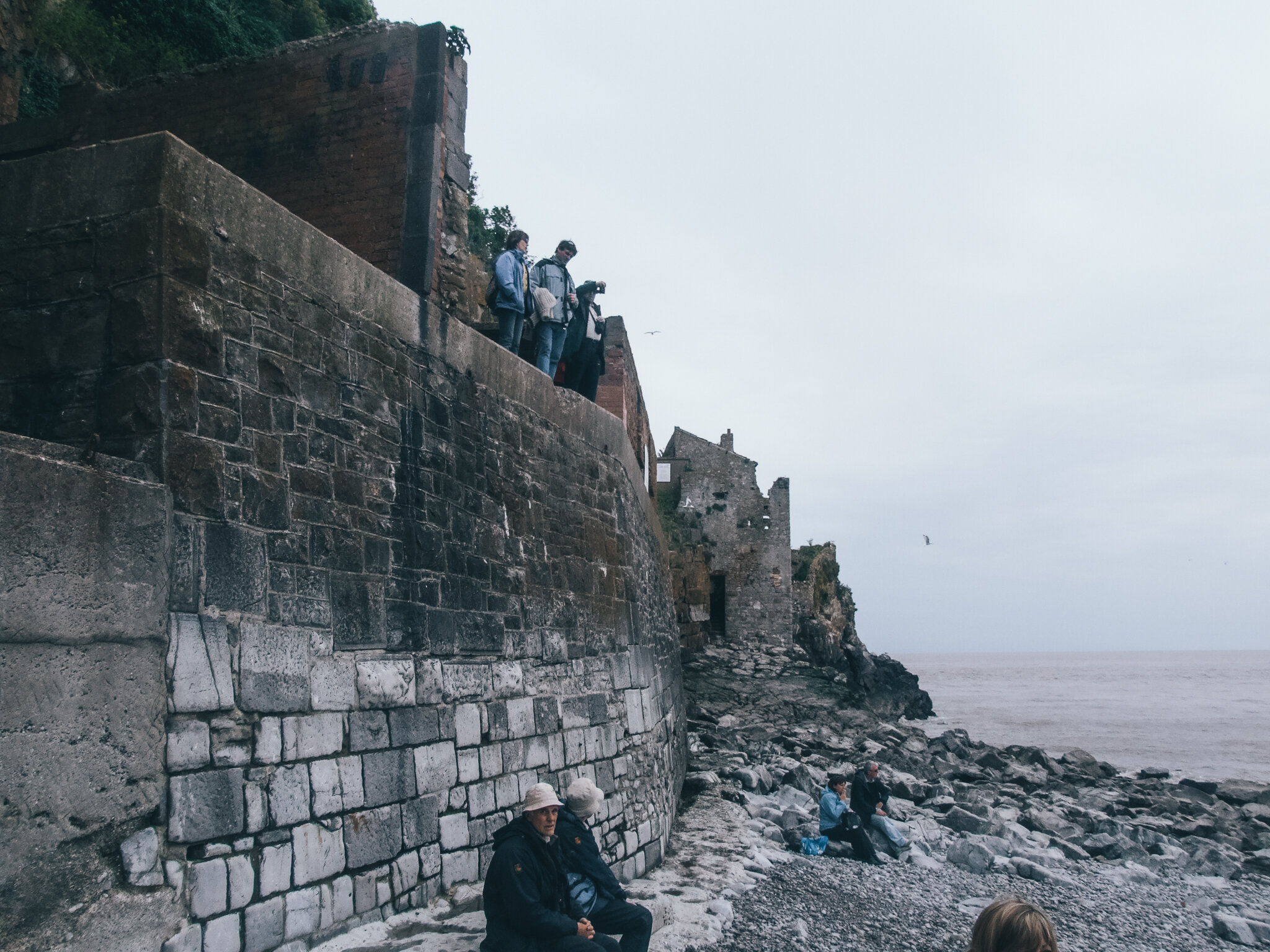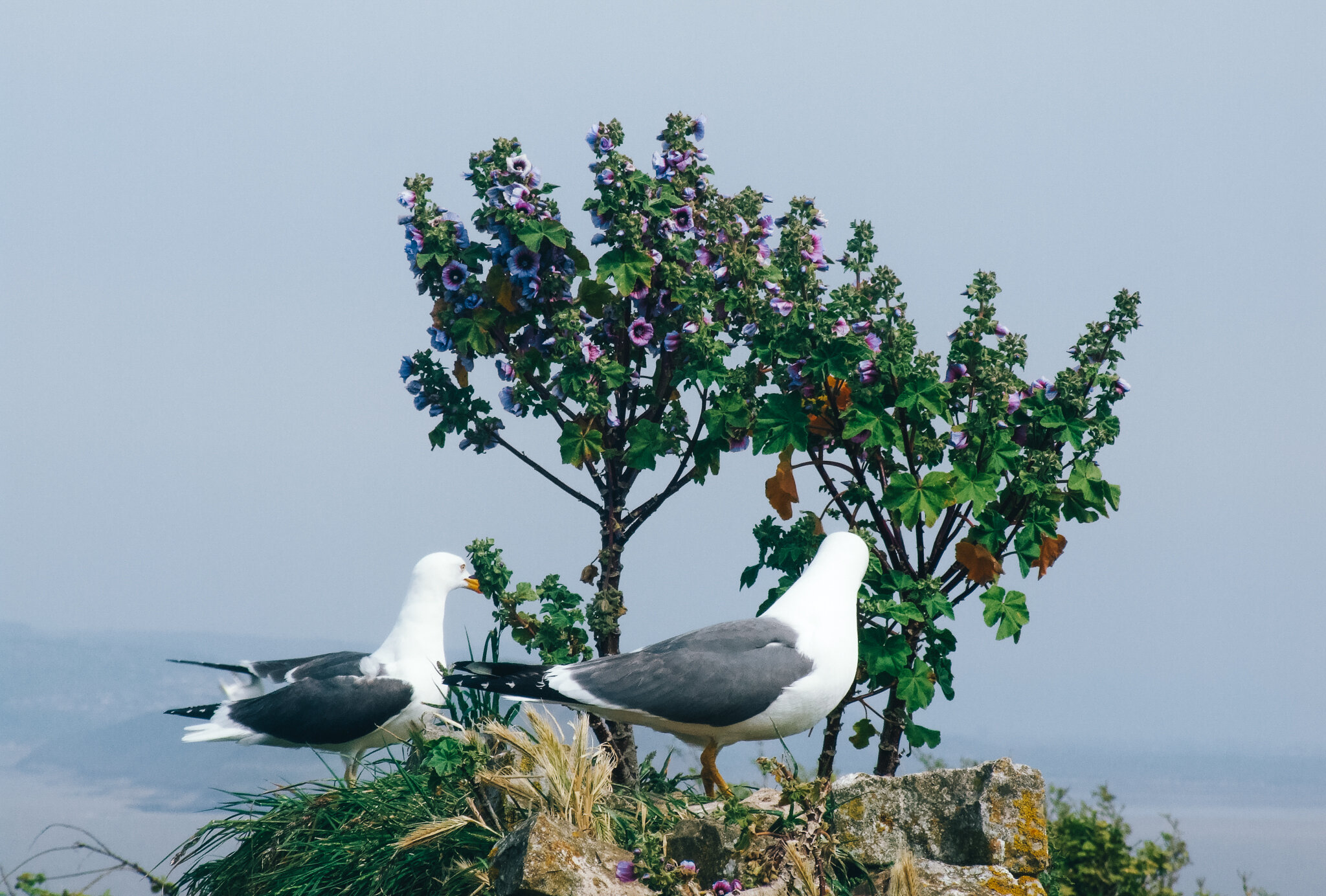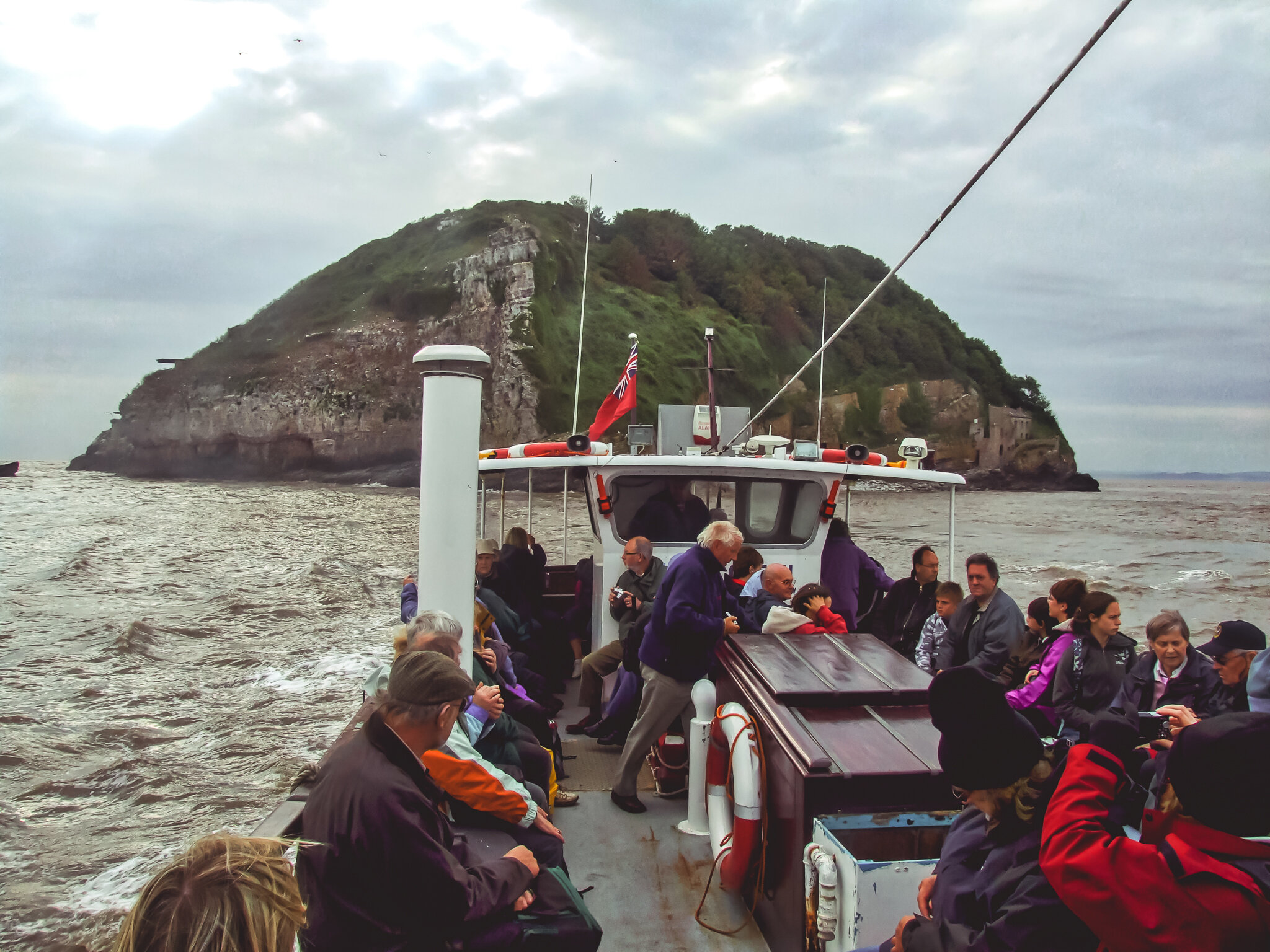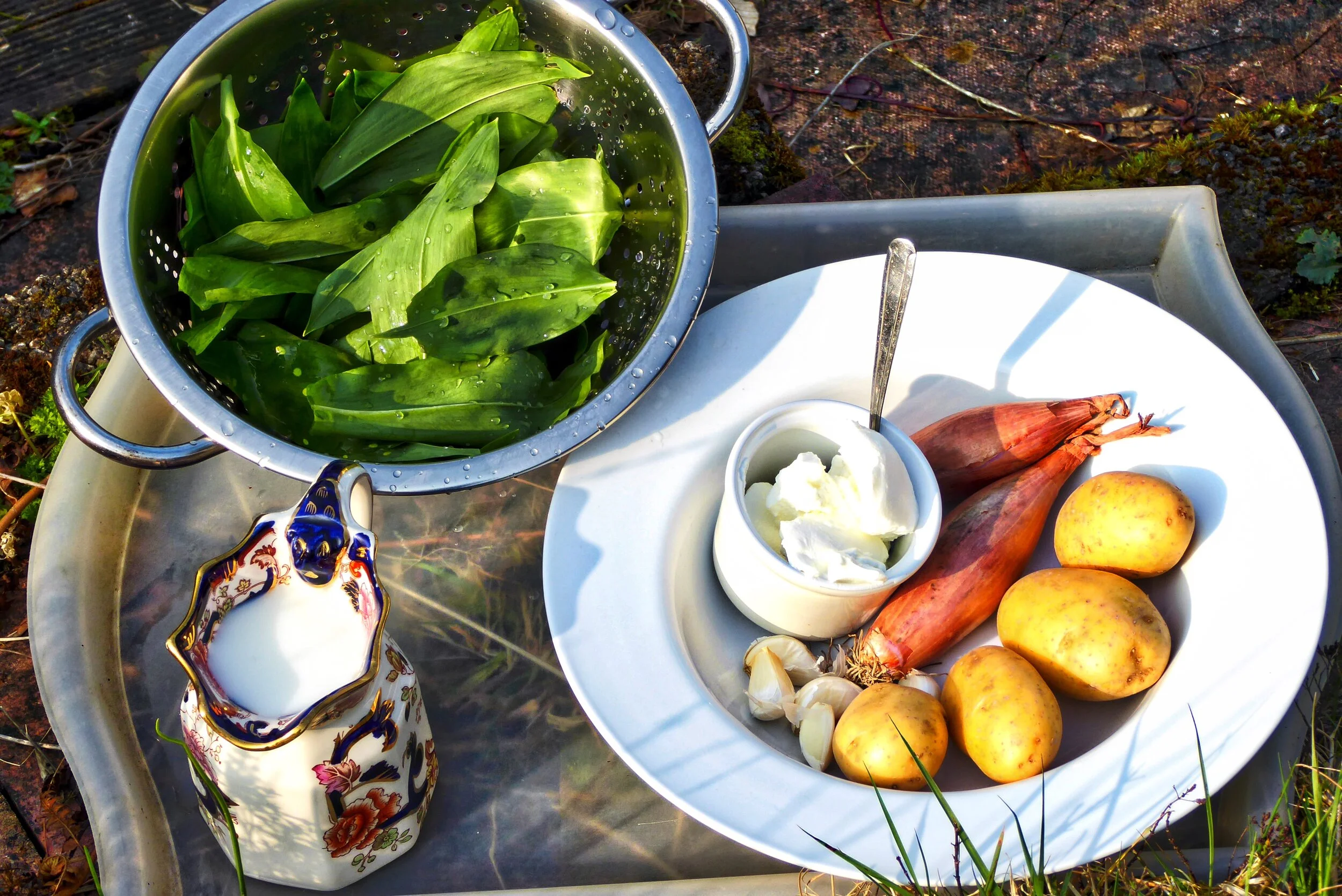Steep Holm, Difficult To Reach Even Outside The Lockdown
Even in normal times there are places which seem just a little too distant. Places which you see in some way then think it impossible that you should ever get to go there. it might be some fantastic foreign location you see on TV - or it could be somewhere much closer that always seems impossibly out of reach.
Of course, during this coronavirus lockdown, just about everywhere is like that - but today on my dog-walk I reached the top of the hill near my house and looked north to the Bristol Channel, which is where I could see Steep Holm looking very distant and very unreachable.
There’s a phrase first coined by Dylan Thomas about a place that’s so remote it’s where gulls go to be lonely. Steep Holm is a bit like that – it is lonely and peaceful in all respects, save for one – it is where lots and lots of gulls go to be sociable, mix with their own kind, breed and generally hang out, busily and noisily.
Warding off the gulls on Steep Holm
More about Seagull-Central later, the first thing to say about Steep Holm is that it offers lovers of the West Country one of the region’s great adventures.
Getting there is an adventure, and somehow being there is like taking part in some kind of ripping yarn featuring the Famous Five. Then, when you leave Steep Holm, a bit of it comes away with you – memories of your island adventure will undoubtedly remain for life.
Perhaps it is the kind of Dunkirk Spirit which seems to prevail among the volunteers who run Steep Holm that instils this sense of adventure. It’s maybe the way the island’s indomitable helpers haul great vats of drinking water more than 200 feet up from sea level with the eager promise of putting on the kettle for a “nice cup of tea”, which they produce alongside lashings of homemade cake before going off to take part in archaeological digs or scrub clearance parties.
Volunteer worker on Steep Holm
Later you see some of them relaxing with glasses of wine while eating their sandwiches in the old barracks which they’ve helped restore into what passes for the island’s comfy visitor centre.
The chairman of the charity that owns and runs the island ambles across to tell you matter-of-factly about the gulls and the number of times he’s had his scalp cut by their razor-sharp beaks when he’s been counting nests.
The secretary of the charitable trust joins you in the little exhibition house which passes as the island’s very own museum to tell you quickly and quietly all manner of fascinating facts about the great 48-acre limestone buttress that shoulders its way out of the waves five miles off the Somerset coast.
In the near distance a generator “putt-putts” its monosyllabic song like an old pre-war boat, beyond the gulls screech - and far below the violent tides of the second highest tide-fall in the world rip around the island cliffs with all the hiss and rush of a mountain torrent.
Somewhere down towards those waves an ancient, long-derelict pub lurks on the edge of a steep woodland, offering the tarry beery memories of the sea-salt stories of yore. The ghost of the dancing wrestling bear which once lived there may still haunt the place. Who drank here and why – is what you wonder when you pass this lonesome place. Not even the dullest of dullards could fail to think of smugglers and pirates - and of the wave-tossed-sailor-Sams and-no-good-boyos of yesteryear’s lawless tide-line.
Far above, a rusting Bofors gun is silhouetted as it aims its thin long barrel skywards at gulls it will never shoot - and around it, dotted here and there across the island’s high plateau, great iron canon rest on their massive sides never, ever, to be moved again.
Welcome to the region’s biggest fortress – the unsinkable battleship - the mysterious, implacable, immovable, steadfast buttress of an isle that is Steep Holm. Welcome to the island of nightmares and dreams.
That, at least, has been my own relationship with the place – and I am told the same goes for many a visitor to climb its mighty ramparts.
Steep Holm is a thing you see, but never go to. It is a kind of promised land floating out there on the horizon. Somehow you assume that one day you may go there, but probably never do. It has taken me more than half a century to reach its great and fascinating bulk.
“We get a lot of people coming over who say that,” commented the founder of the island’s mainland support group called the Steep Holm Shirkers. “They say – we’ve been meaning to come over for years, but have never got around to it until now.”
“I worked in Weston-Super-Mare for 40 years and never stepped foot on Steep Holm once during that time despite wanting to - and despite the fact that Weston is where the ferry goes from,” piped in one of Dave’s willing Shirkers.
They, by the way, don’t shirk at all – the Shirkers are a 100-strong support army of volunteers who help the 160-member Kenneth Allsop Memorial Trust look after the island it owns.
It’s all done on a shoestring, and much of it is hard work – but having a special connection with your very own island seems to attract a pleasant and willing kind of volunteer.
“It does get under a lot of people’s skins,” Joan Rendell told me some years ago when she was secretary of the memorial trust (she might still be for all I know). “People come to the island, they like it, then they want to get involved.
It’s a process that happened to Joan and her husband Stan way back in 1976. “We were members of the County Archaeological survey - there had been a survey of the island before the war – but during the war such changes were made on Steep Holm it was felt there ought to be another and we were called in.
“It went from there – we did the military, the archaeological, the general history - and we just got stuck.” So much so, that the couple have produced a fascinating book on the island called Steep Holm’s Pioneers as well as an illustrated trail guide.
Which brings us nicely to Steep Holm’s geography: where it is, how you get to it, and how to enjoy the island when you reach it...
Basically, it is part of a spine of limestone that continues along the Mendips and directly offshore of Brean Down – the great needle of a peninsula that divides Bridgwater Bay from the smaller bay at Weston-Super-Mare. This spine continues across the channel to form Steep Holm and neighbouring Flat Holm, which this series will be visiting later in the summer. But, whereas it is reached from Cardiff, the Steep Holm ferry leaves from Weston.
And a pretty tricky crossing it was too back when i last visited. The skipper of the Bristol Queen, a beautiful old Clyde ferry built in 1938 could only take his 100-seater vessel to the island at certain times of the ferocious tide – and even then had to use well-honed skills to bring her bow up on Steep Holm’s one and only beach.
For the first timer, the approach can be alarming as she noses her way around massive Tower Rock at the eastern end of the island to avoid the roaring tide-race that swirls just feet out to sea. Even when her bow is safely onto the pebbles, crew have to urge passengers to depart down the gangplank as fact as they can for fear that the vessel will hold fast on the ebb.
For the visitor, it’s then a matter of ascending. Up is the only way to go on Steep Holm, which is skirted by high cliffs around all its oval-shaped coast, save for here at the landing beach.
It’s difficult to believe but, because of several vandal attacks, the trust now keeps the island locked. A steel door has been mounted across the steps at the top of the beach and this has to be unlocked before visitors can access the zig-zag path that climbs through the steep sycamore wood past the semi derelict old inn.
It seems almost unbelievable that this remote hostelry should have ever had any trade at all, but it did. While in the hands of a couple called Fred and Mary Harris in the 1850s it enjoyed quite a reputation according to Stan and Joan’s book.
“Their renowned dish of fresh fish washed down with a glass or two of excise-free alcohol became a byword,” says the book. “And excursionists came not only from Weston, but also from Cardiff and Bristol – sometimes arriving by steam-tug.”
The place was also frequented by crews awaiting the tide to take them up channel – sailors who would deliver far more in the way of tax free spirits from places like the West Indies than they drank.
The story becomes ever more bizarre, with Fred Harris one day swapping his Newfoundland dog for a bear. This creature became a feature of the inn, and once fought with, and beat, a well known wrestler. It also, alas, attacked an Italian governess who was enjoying a day out from Bristol, and succeeded in maiming her for life.
You can read many such strange and sometimes rip-roaring yarns in Steep Holm’s Pioneers, but here we’d better stick to the main backbone of the island’s history.
Prehistoric man knew a good fishing place when he saw one and there is some evidence that he visited in his various guises; the Romans used the place as a look out station; and a most remarkable carved Cetlic head has been found in the woodland. There was a saint (St Gildas), there were Vikings, warreners, fishermen, builders, Victorian navvies, gunners, coastguards and wardens.
The island was fortified in the 1860s and Steep Holm and Flat Holm form part of a line of defences, known as Palmerston Forts, built across the channel to protect the approaches to Bristol and Cardiff. Steep Holm has several gun batteries, and a centralised group of brick-built barrack blocks. These facilities were updated in both World Wars and, in the second, searchlight batteries were erected to seek out enemy planes.
All this fortification is very much in evidence as you walk around the half mile long plateau which acts as a kind of flat-ish roof for the island. There’s a circular path which takes you close to the cliff-tops and a central route which leads through ancient fields that are now filled with low scrub.
Island HQ and cafe
It’s near the eastern end of this that you come to both the ruins of a farm and the remains of an Augustinian priory believed to have been built by monks in the 12th century, and where archaeological work is ongoing.
The monks are thought to have introduced plants like wild leek, henbane and caper spurge for medicine or food - some 260 species of plant have been recorded on the island, including several rarities like the wild peony (Paeonia mascula) for which Steep Holm is the only British home. A variety of buck’s-horn (Plantain Plantago coronopus), which occurs along the cliffs, is unique to Steep Holm.
But it’s those gulls that you notice longest and loudest, especially at this time of the year. There are some 1800 breeding pairs on the island according to the trust’s bird expert and chairman Tony Parsons – mainly the common herring gulls, then lesser black-backed and a few greater black-backed - along with small numbers of other sea-birds.
“It’s the fault of humans that gulls are such scavengers,” Tony shrugged when I pointed out that some people aren’t quite so keen on these elegant marauders. “If people in places like Weston didn’t go around dropping things like pizzas and burgers, they wouldn’t have learned to scrounge.”
He also told me numbers had gone both up and down over the years. At one time there were so many gulls on Steep Holm you could barely take a step without crunching eggs at this time of year – then numbers declined after the introduction of bin-liners caused waste food to heat and rot giving the gulls botulism. Now numbers are back on a more even keel.
To the non-gull-lover a visit to Steep Holm at this time of year, when the gulls’ eggs are just hatching, can resemble a scene from Alfred Hitchcock’s movie The Birds. They dive-bomb and mob almost every step of the way.
I’d recommend this remarkable island to everyone once the dreaded coronavirus lockdown is over – join the 1000 or so visitors a year and go to stunning Steep Holm without more ado - but if go in May or early June, take a stout hat.





